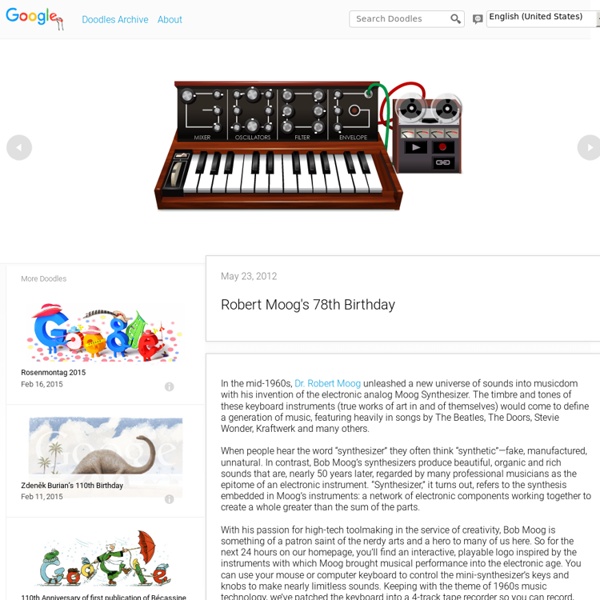Robert Moog's 78th Birthday
In the mid-1960s, Dr. Robert Moog unleashed a new universe of sounds into musicdom with his invention of the electronic analog Moog Synthesizer. The timbre and tones of these keyboard instruments (true works of art in and of themselves) would come to define a generation of music, featuring heavily in songs by The Beatles, The Doors, Stevie Wonder, Kraftwerk and many others. When people hear the word “synthesizer” they often think “synthetic”—fake, manufactured, unnatural. In contrast, Bob Moog’s synthesizers produce beautiful, organic and rich sounds that are, nearly 50 years later, regarded by many professional musicians as the epitome of an electronic instrument. “Synthesizer,” it turns out, refers to the synthesis embedded in Moog’s instruments: a network of electronic components working together to create a whole greater than the sum of the parts.
Dave Smith Instruments Mopho Keyboard and Tetra | DV247.FR
This bundle includes the DI Mopho Keyboard and the DSI Tetra module - just hook them up using the Poly Chain out to get a massive 5-voice analogue monster! The Dave Smith Instruments Mopho Keyboard is a much requested keyboard version of the popular Mopho monophonic analog synthesiser. This offers the same compact, affordable and powerful functions as its brother but with more knobs, switches and of course, a 32-note weighted keyboard. The voice architecture of the Mopho is identical to a single voice of the Prophet '08, but with a couple of unique twists. DSI have added two sub-octave generators, one per oscillator for additional girth and crushing bass. The DSI Mopho is fully programmable and all parameters can be tweaked from the front panel making this version a lot easier than its little brother. The DSI Mopho Keyboard Main Features Include: Provisional Information Tetra’s voice architecture is the same as Mopho’s, but with a couple of notable differences. Tetra is expandable.
MCV4 Info
Ergänzende Erläuterungen: Der MIDI-Kanal, der Referenz-Ton für CV1 (dies ist die MIDI-Tonhöhe, der 0V CV1 und damit der tiefstmöglich Ton entspricht) und die Controller-Nummer für CV4 werden über eine Lern-Funktion eingestellt. Hierzu wird der Lern-Taster betätigt und über MIDI der betreffende Befehl gesendet. Die anderen Parameter (Retrigger, Triggerpolarität etc.) werden im Lern-Modus über Program-Change-Befehle eingestellt. Der im Vorgängermodell MCV1 vorhandene Hz/V-Modus wurde auf Grund der vielen damit verbundenen Probleme im MCV4 nicht mehr vorgesehen. Eine Reihe von Synthesizern mit Hz/V, lassen sich aber mit einem Trick auch über V/Oktave steuern (z.B. Weitere Hinweise finden Sie in der MCV4-Bedienungsanleitung MCV4_Anl.pdf und auf unserer FAQ-Seite. Additional Remarks: More details can be found in the user's guide MCV4_man.pdfand on the FAQ page.
Related:
Related:



